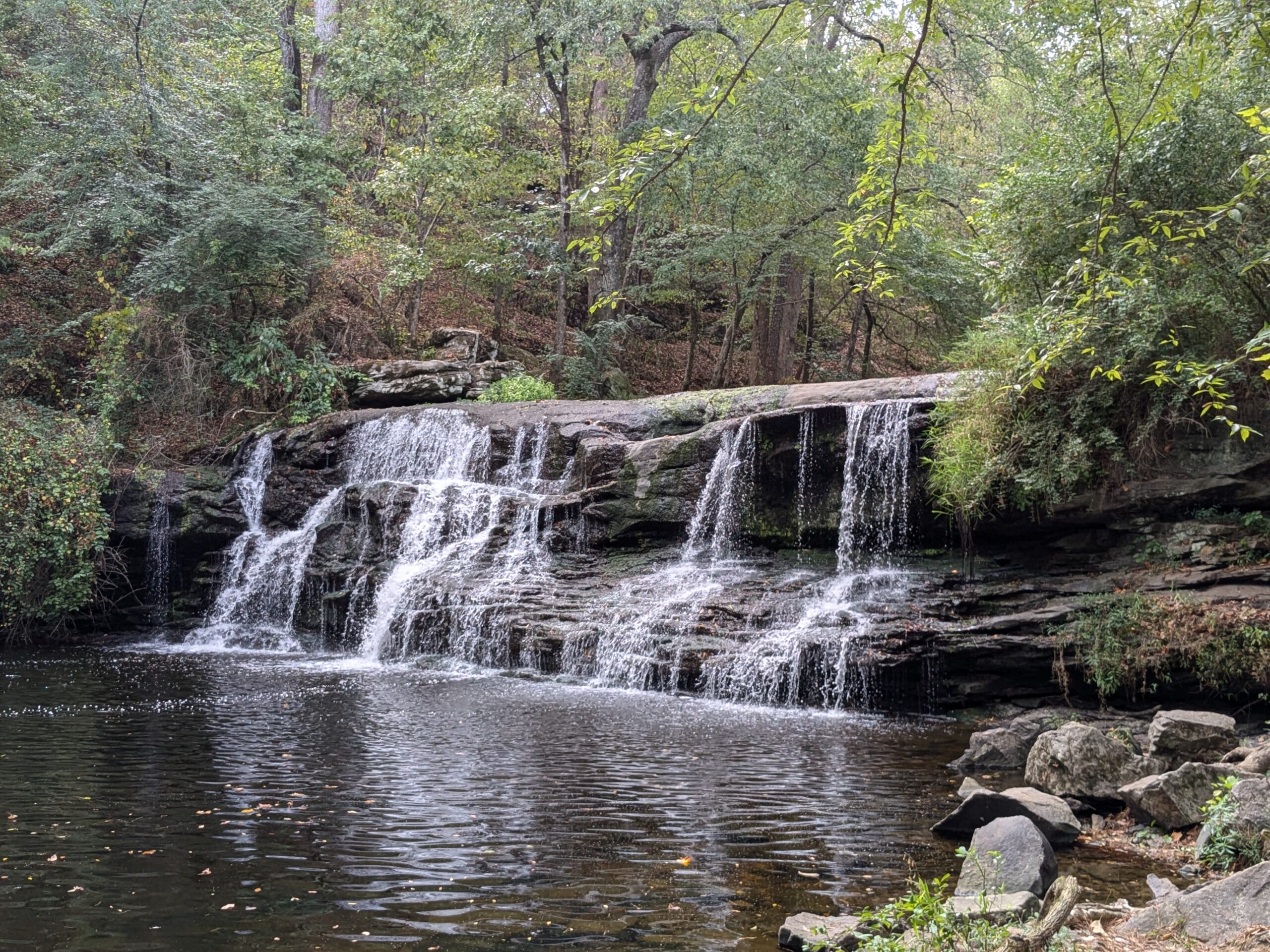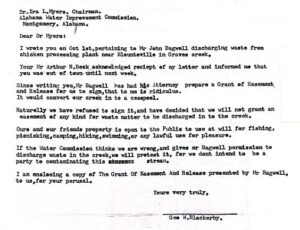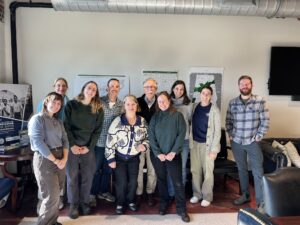
Just in time for the new year, FLT acquired a new publicly accessible conservation property—the first outside of Jefferson County! This 23-acre parcel in Blount County is located along Graves Creek, just upstream of the Locust Fork River, and is home to Mardis Mill Falls. The falls are a breathtaking sight as they cascade over sandstone ledges, tumbling into a serene pool with a steep bank. In the spring, the bank is adorned with blooming mountain laurel, adding a vibrant touch to the scene. The falls have long been a beloved destination for swimming, fishing and paddling.
This acquisition is significant not only for its recreational value but also for its ecological importance. The property is home to the federally endangered Black Warrior waterdog, a salamander species found only in the Black Warrior River basin. Conservation efforts in this region are critical, as Alabama’s State Wildlife Action Plan highlights improving water and habitat quality in the Locust Fork watershed as one of the highest priority actions for the greater Black Warrior River watershed (ADCNR, 2017).
FLT intends to enhance the property in partnership with Blount County. Plans include trail improvements, increased regular maintenance, and updated signage to inform visitors about safety concerns, such as the falls’ high drops. These efforts aim to protect both the natural beauty of the site and the safety of its visitors.
Community Support from Friends of Locust Fork River
The Friends of the Locust Fork River (FLFR) has been caring for Mardis Mill Falls since 2017. Their ongoing efforts include regular trash collection, water quality testing, and advocacy for the area’s preservation. Their dedication ensures that the area remains safe and enjoyable for visitors year round.
FLFR shared their excitement about the acquisition: “Friends of the Locust Fork River is extremely pleased that the Mardis Mill Falls property on Graves Creek has been acquired by Freshwater Land Trust. FLT is known as a vigilant caretaker; this beautiful property will thrive under their care while allowing everyone to enjoy not only its beauty, but also engage in swimming, paddling, and fishing in the waters of Graves Creek and Mardis Mill Falls.”
A Rich History at Mardis Mill Falls
The property’s history is as rich as its natural beauty. Mardis Mill, built by Sam Mardis, operated before and during the Civil War, and was one of the earliest grist mills near Blount County. The mill ground wheat and corn, serving as a community hub where families gathered for picnics by the falls. Nearby, a government-owned still produced brandy from locally grown apples.
George and Kate Blackerby, who were in the real estate business, and their daughter and son-in-law, Ouida B. and William T. Kinzey, purchased the property in 1959. Although Blackerby sold a great deal of property in the area, he made the decision to hold onto this land, reflecting his deep appreciation for its recreational and ecological value. He and his wife, Kate, would spend a great deal of time there with their family fishing, hunting, swimming, and exploring the woods. He was passionate about protecting the water quality as well; saved letters provided by the family reveal his attempts to keep an upstream chicken plant from polluting the creek. As stated in the letter below, George refused to sign a request for a “grant of easement” allowing the facility to discharge waste into the water.

Ouida Kinzey did a great deal of research on the property. In correspondence with members of the Mardis family in 1991, Ouida notes that her family had found numerous Native American artifacts in the creek. She also brings up “the killing,” a local folk tale involving a man who was shot dead in an unfortunate incident of mistaken identity above the falls, leaving bloodstains for years.
Ouida and Bill Kinzey, her brother, Bill Blackerby, and his wife, Ann, kept up the same generosity of spirit to care for the land, doing their best to keep trash out of the creek and carrying on the legacy of their father. Bill Blackerby, Jr., who inherited the property in 1999, had a vision to ensure the land’s protection forever.
With ongoing community support and conservation efforts, this remarkable site will continue to thrive as a place of natural beauty, recreation, and historical significance for generations to come.


